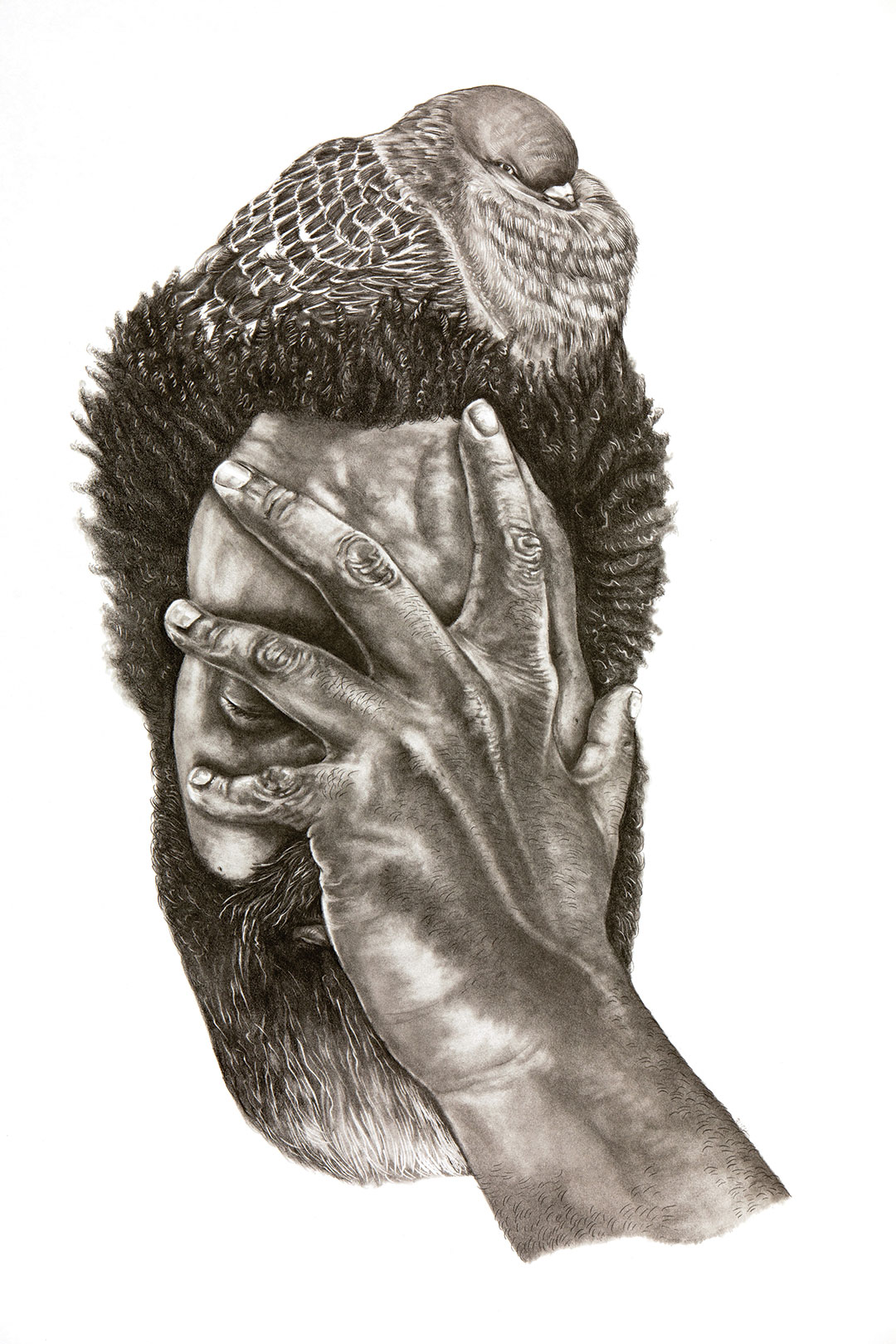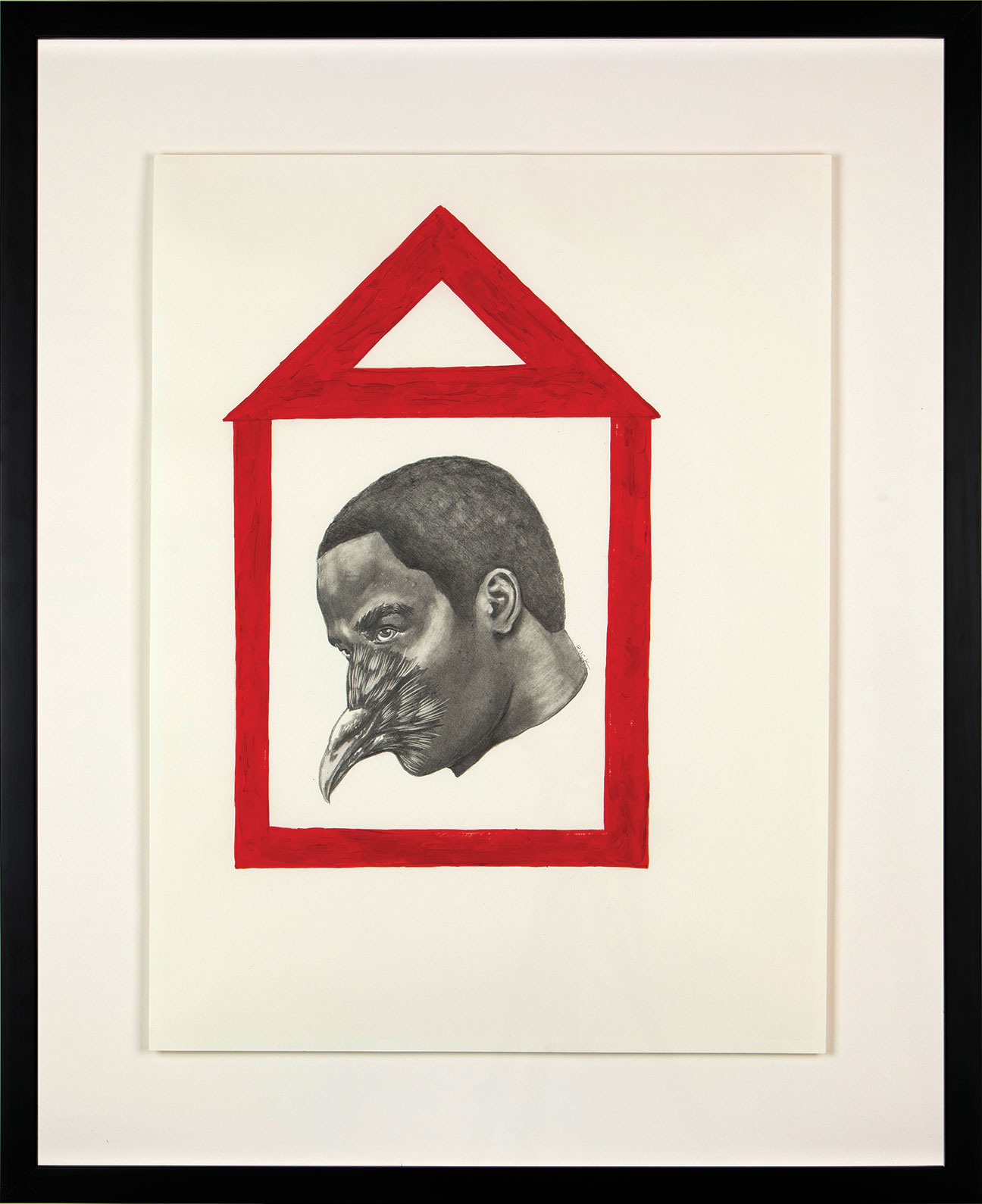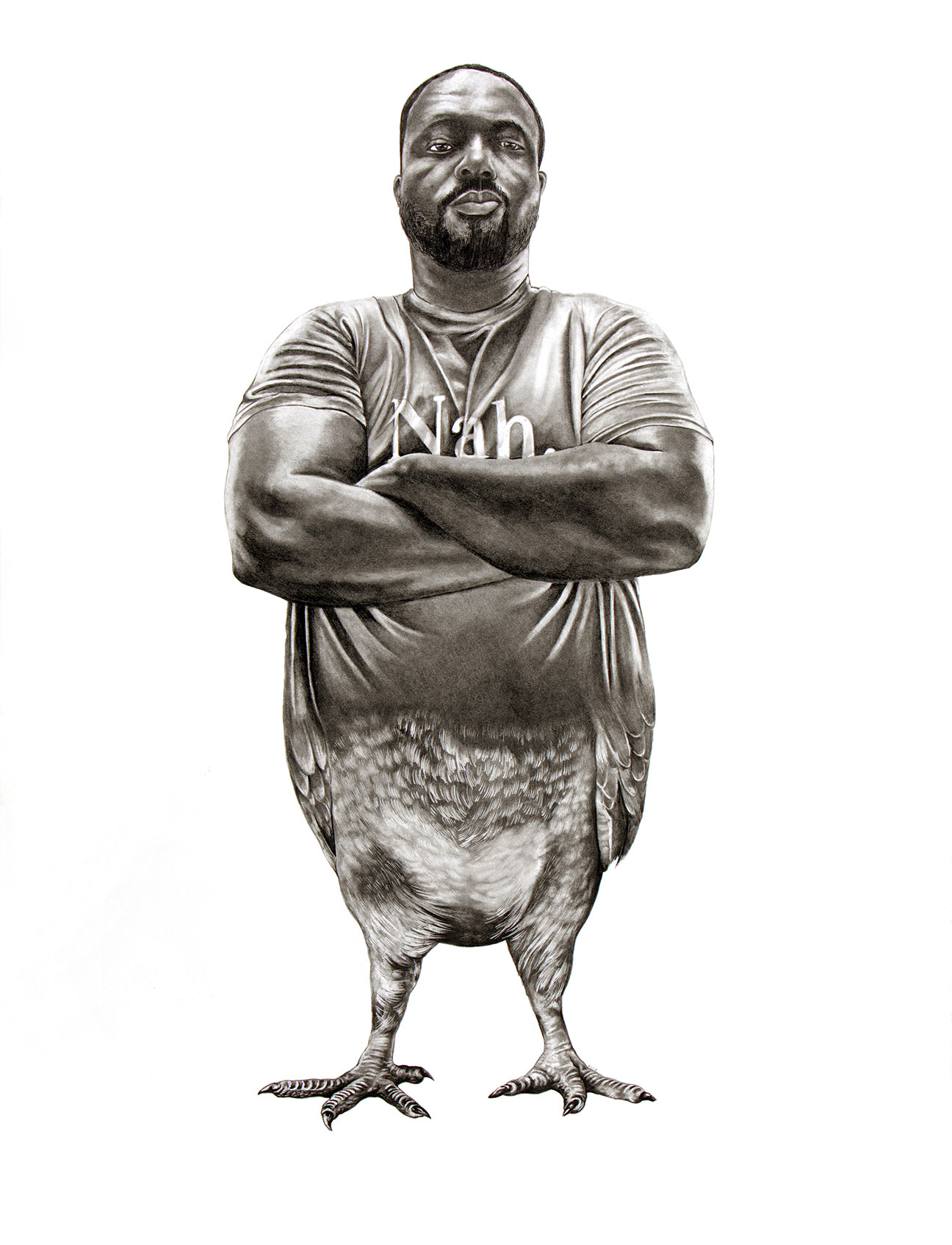« Reviews
Rashaun Rucker: Contemplation of Flight
N’Namdi Contemporary Gallery - Miami
By Charles Moore
Leave it to artist-journalist Rashaun Rucker to sell out a show at one of Miami’s most exclusive venues, at the height of the COVID-19 pandemic. “Contemplation of Flight,” safely on view by appointment at the N’Namdi Contemporary Gallery through the end of 2020, showcased 10 unique pieces-in addition to a series focused on what Rucker refers to as psychological redlining, in a play on the number 13 from the 13thamendment: the abolition of slavery.
The show, initially scheduled to take place from November 6 through December 19, 2020, was extended to December 31 due to the overwhelming response. Each piece reflects Rucker’s realistic approach to modern African-American society, blending his journalistic background with his artistic prowess, culminating in a series of powerful works focused on issues often neglected or overlooked by the press. To explore the Black experience in America both historically and contemporarily, he dissects the complexities of the Black male psyche, featuring graphite-on-paper drawings of amalgamated figures blending birds and men, depicting beings pigeonholed, if you will, yet awaiting flight—both literally and metaphorically. The images shed vital light on discriminatory housing practices, mass incarceration, and other topics which seep into the overarching identity of Black communities in the United States.
Enter the N’Namdi gallery space, and you won’t know where to begin observing Rucker’s masterpieces. Code Switch (2020) offers a stunning take on what it means to wear a mask; depicting a Black make figure with two pigeons protruding from his head—one lighter, and the other a more traditional gray—the piece investigates the implications of code switching, or changing languages or cultures in order to appeal to a specific audience, perhaps at the expense of one’s most authentic self. This practice has become commonplace, and in Rucker’s words, it’s often necessary to secure a certain job, or to enter a particular space. As the subject makes eye contact with the viewer, Code Switch begs the question of which pigeon a person must embody in order to achieve, or work toward achieving, the outcomes they desire.
Then there’s Layover (2020), a piece that explores the complacency of our personal decision-making. Over the course of our lives, many of us grapple with whether it would best serve us to stay where we are, or to fly to another place (in the proverbial sense, of course). The piece itself it reminiscent of a decision the artist made early in his own life, as a college student, during a time in which he considered studying for a year at the University of Kumasi, Ghana in an art exchange program. Rucker’s grandmother was fearful of the change and convinced him to stay put, and to this day, the Detroit-based talent considers his decision—his self-proclaimed complacency—one of his greatest regrets.

Rashaun Rucker, Troubled Rest, 2020, graphite on paper, 50” x 38.” All images are courtesy of the artist and N’Namdi Contemporary Miami.
Among the artist’s favorite pieces in the exhibition is Overbooked (2020), a drawing that explores the impact—and the intention—of defiance. The piece reveals a Black man staring firmly at the viewer, arms crossed, his torso human and adorned in a t-shirt with the word “Nah” emblazoned across the chest, the man’s body feathered and pigeon-like, his feet webbed and clawed. Overbooked examines the way in which modern society allows only a select few people in the door, so to speak—by placing the subject on the precipice of this very door. He’s being told the space he wishes to penetrate is full, overbooked, yet his defiant stance indicates that he will in fact prevail: by getting on the plane, getting in the room, getting the house or job or loan he so desires. The shirt, according to Rucker, is an homage to the late Rosa Parks, who—like the subject—refused to give up what was rightfully hers.
The exhibition wouldn’t be complete without a self-portrait: Troubled Rest (2020), the first time Rucker has ever placed himself at the center of his art, emphasizes the complexity of duality. While the Unites States is still in many ways a place of greatness, the artist explains, the country is deeply troubled. Rucker’s grandmother, for instance, celebrated when she was granted the right to vote—yet she had no choice but to be escorted to her polling place by federal marshals. The self-portrait reveals the subject placing his hands over his face, paired with a pigeon burying his head into his feathers. “There’s always a duality,” the artist says. “It’s never just 100 percent goodness.” And this duality is no less apparent in Coop #1 (2020) and Coop #2 (2020), two pieces in which Rucker uses color for the first time in his career. Though he prefers to work entirely in black-and-white, he wanted to, first, experiment with the notion of being placed in a coop—in a designated space, trapped-and second, to play off the concept of redlining. For many underserved communities, including people of color and women, car insurance is redlined, taxes are redlined, and the stakes for evading a life of poverty are higher. The blood-red coops in these pieces, surrounding the subjects, and the red tape involved in the obstacles so many of us face, are apparent in this series.

Rashaun Rucker, Psychological Redlining Study, 2020, ink on paper, 14” x 11,” frame size: 22 ½” x 18 ½.”
The exhibition ends on a note of release, with Finally Free (2020), a heavy work depicting a hand reaching skyward, releasing a bird-shaped balloon as a symbol of death or loss. A powerful statement on the finality of human life, Rucker offers a moving take on death in Black communities—on how the end of life is in many ways the ultimate freedom. Though we might suffer in civilization, only to be free in death, individuals can realize their fullest human selves in the afterlife. The balloon in the piece is a pigeon, or a dove-like pigeon hybrid that was in fact bred to be white—to be what society considers pure—like the doves we witness in countless funerals. Yet contrary to these pigeon-doves, the city-dwelling pigeon is most often black or gray, and so the release of the balloon into the sky represents acceptance, or hope, even when things don’t appear as they seem. No doubt, each piece in the Contemplation of Flightexhibition reflects the artist’s photojournalistic background, helping to put into perspective the racial and socioeconomic themes that have come to shape our lives.
(November 6 - December 31, 2020)
Charles Moore is an art historian, art collector, author, and doctoral student at Columbia University’s Teachers College. He writes on the economics of art and contemporary artists for publications as diverse as Artnet, Artsy, Cultured Magazine, Juxtapoz Magazineand Fine Art Connoisseur Magazine. He has received numerous awards for his work, including the Titus & Venus Legacy award from Harvard University’s Black Grad Association, and the Artis curatorial fellowship, in collaboration with the International Studio & Curatorial program, to research contemporary artists in Israel. His first book, The Black Market, explores ideas around how to start collecting art.
Filed Under: Reviews




































Leave a Reply
You must be logged in to post a comment.